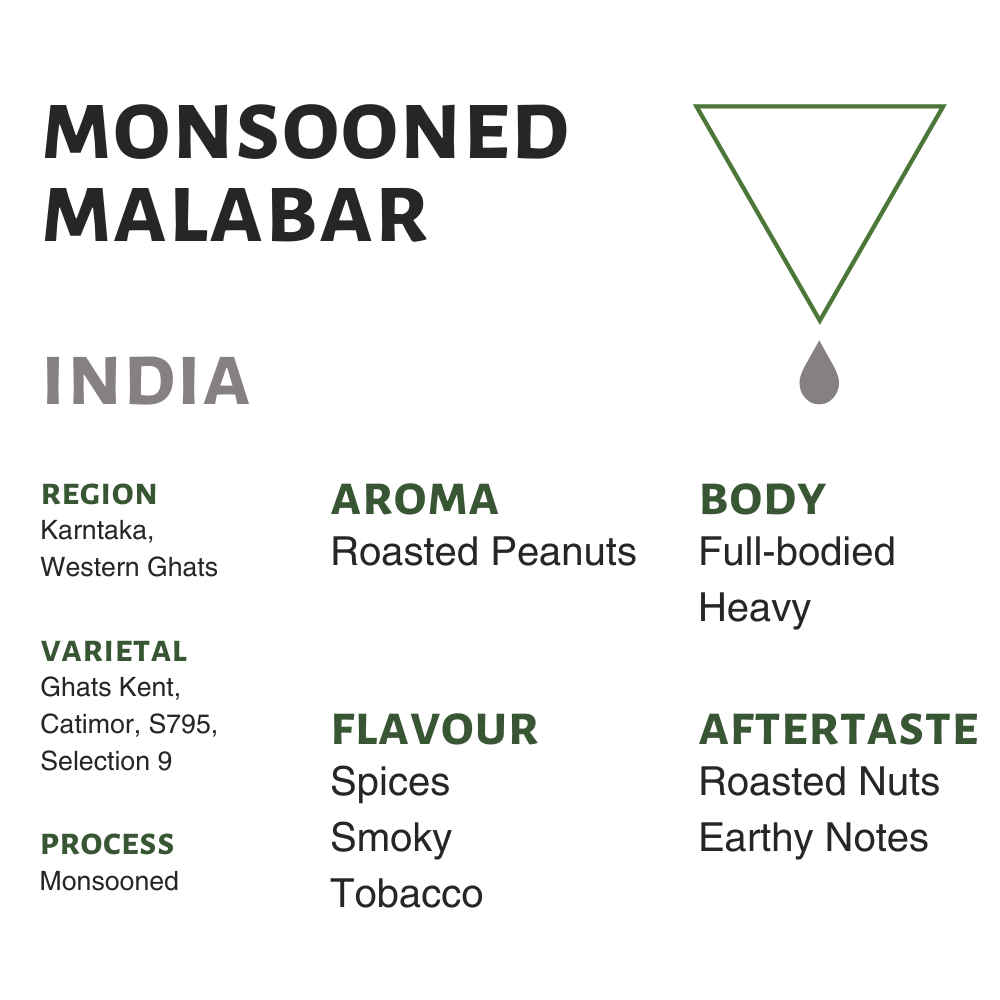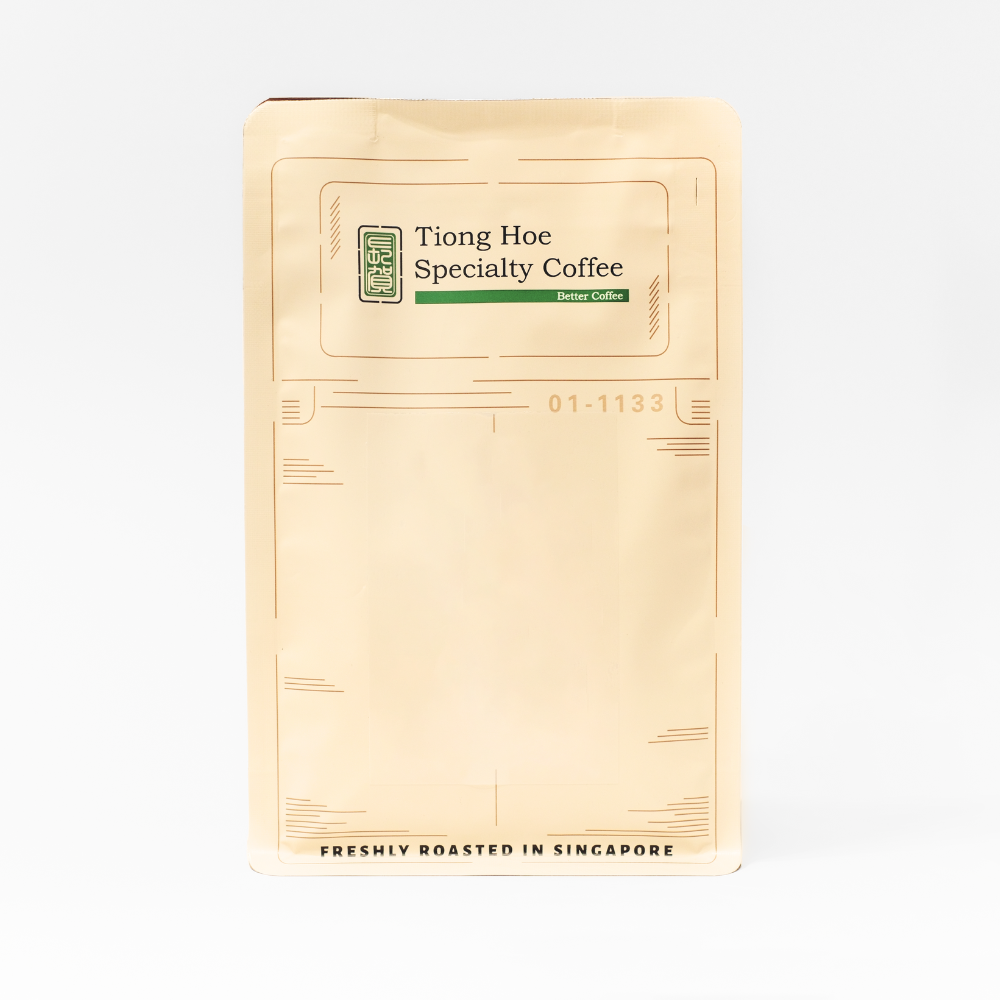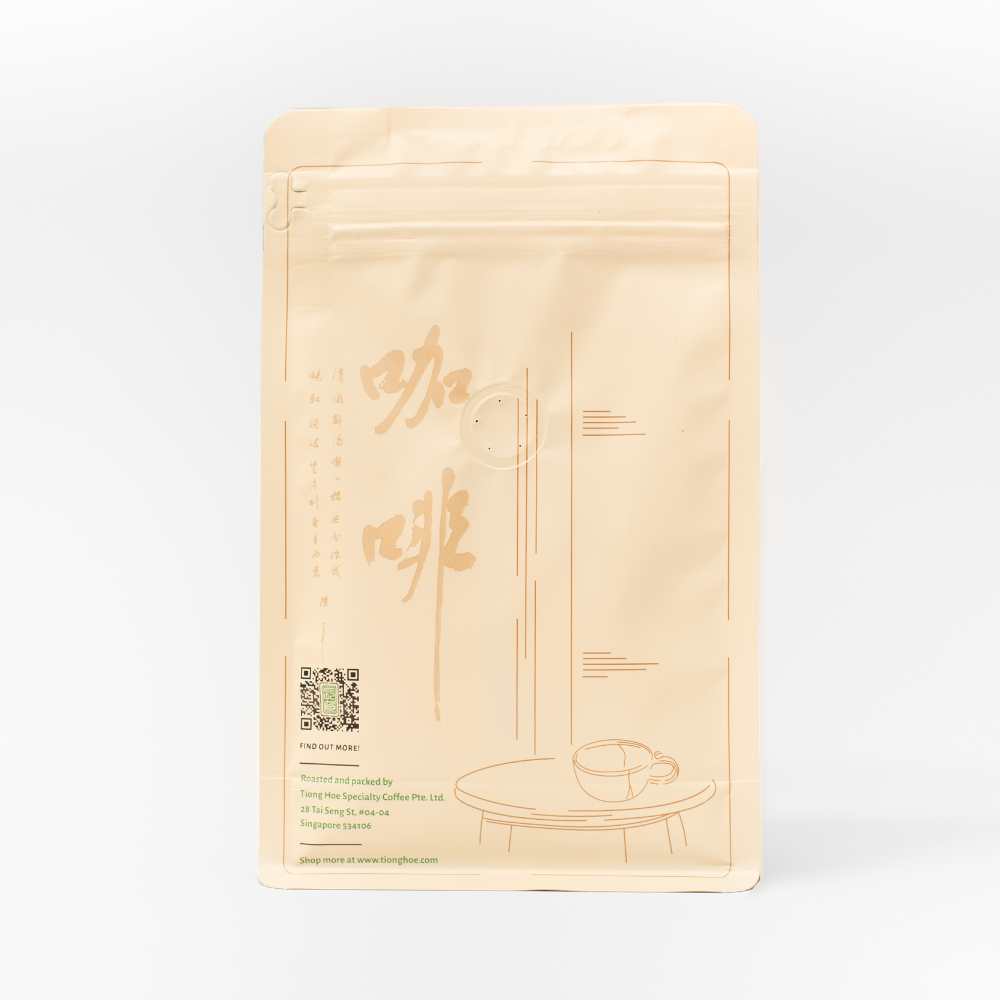


India Monsooned Malabar
Tax included. Shipping calculated at checkout

Description
Region: Karntaka, Western Ghats
Varietal: Ghats Kent, Catimor, S795, Selection 9
Process: Monsooned
The color, shape and size of the beans as well as thier aroma and taste are the result of a special post-harvest processing. In olden times, coffee was shipped from India to Europe in wooden sailing vessels, taking four to six months to sail around the Cape of Good Hope before reaching their destinations. Coffee was stored below the water line and kept in a humid atmosphere which was caused by the moisture that seeped through the wood. Because of that, the coffee underwent a form of treatment (processing) on its long voyage to the market. By the time the raw coffee beans reached Europe, its color changed from bright green to pale gold, and had lost its acidity in the process. The monsooned process was later developed in India to mimic the flavor by simulating the treatment the coffee received in the wooden sailing vessels en route to the European ports.
The monsooning process consists of exposing natural coffee beans in layers of four to six inch thickness to moisture laden monsoon wind in a well ventilated brick or concrete-floored warehouse. This process is carried out on the West Coast of India, making use of the winds from the Arabian Sea during the Southwest Monsoon months of June through September. The processing begins with top grade beans that has already been processed by the natural method. To equalize moisture absorption, the beans are raked frequently, followed by bulking and re-bagging at regular intervals. At the end of the monsoon season, this coffee is re-bulked, graded again, bagged and moved to a drier region for longer term storage. In this 12-16 week process, these beans absorb moisture in stages, swell to nearly twice their original size, develop color ranging from pale gold to light brown and acquire a special, unique flavor.
Roasted Peanuts
Spices, Smoky, Tobacco
Full-bodied, Heavy
Roasted Nuts, Earthy Notes

